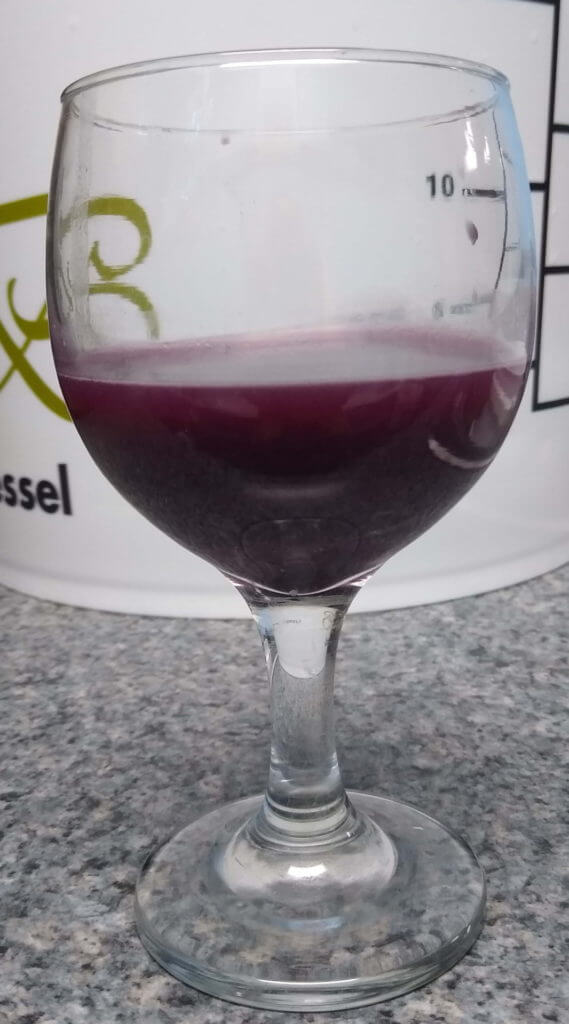Wine 2020 – Update #02
14 October 2020
Wine 2020 is underway! Last Saturday my grapes arrived — as I intended I purchased 16 lugs weighing 36 lbs each, a total of 576 lbs of grapes.
Red Wine
My mixture is:
- 8 lugs Merlot
- 4 lugs old vine Zinfandel
- 1 lug Cabernet Sauvignon
- 1 lug Cabernet Franc
- 1 lug Malbec
- 1 lug Petit Verdot
With the exception of the Zinfandel, everything is a red Bordeaux grape. For those not familiar, only 5 red grapes can legally be grown in the Bordeaux region of France. My original intention was to produce a blend of those grapes.
I’m fermenting the grapes in 4 batches of 144 lbs (4 lugs) each:
- Merlot 1 – American fermentation oak
- Merlot 2 – French fermentation oak
- Zinfandel – American fermentation oak
- Cabernet Sauvignon, Cabernet Franc, Malbec, Petit Verdot – French fermentation oak
Ideally I’d buy a minimum of 3 lugs of each grape so I’d make at least a carboy. Then next summer we’d conduct taste testing and decide on the best blend. Since I don’t have the space for that I’m making a “field blend”, e.g., I’m going to mix what I got and hope for the best! more on this later …
Interlude …
The wines have been fermenting since Sunday and are perking along nicely. I added Scottzyme ColorPro enzyme, which promotes color extraction … meaning my wines should be darker & inkier. The Zinfandel is 1/3 along the fermentation path, and the color is very pretty!

Fermentation Oak – what is it?
Fermentation oak is oak products that are added during fermentation and discarded afterward. Once the grapes are pressed, this oak is left behind, it’s job done. This is often referred to as “sacrificial oak”, as it does not add oak flavoring to the wine; it improves color stability, improves mouth feel (viscosity), and helps the wine clear faster.
I’m experimenting to see if there is any difference between American and French oak. For aging oak that imparts flavor, they are very different. Supposedly they are the same for fermentation oak, so we’ll see. Since American is $2 less/lb, if they are the same, I’ll save a few dollars in the future.
The oak I purchased is shredded, so there is a LOT of surface area to contact the wine.
Barrels — yes, plural
Last year I purchased a 10 year old barrel and put the second run wine in it, as that was the only wine of which I had more than 15 gallons. The barrel is 54 liters (14.25) gallons so I needed a large quantity to fill it.
This year, my planning included aging the first run wine in the barrel, or more accurately, half would be barrel aged and half not, and I’d either blend them, or not. However, I figured out how to make room for a second barrel, so I am purchasing a second used barrel from the same couple. The entire first run will be barrel aged.
However, barrels over 3 or 4 years old have very little oak character to contribute. But that’s only part of the picture — wine evaporates through the wood of the barrel, so the liquid (water and alcohol) are reduced, but all remaining particles — which constitute color, flavor, smell, etc — are concentrated. Barrels requires topping up; mine requires about 500 ml to 750 ml per month.
Each barrel “consumes” 8 to 12 bottles of wine per year — but the remaining wine is better. This is quality over quantity.
But I still want the oak character. Last year I added toasted French oak cubes to all my wines, to impart that oaky flavor. This year I will be experimenting with several oak products.
The Blend
As I said, I’m doing a field blend of Bordeaux grapes — 2/3 Merlot and 1/3 “other”. This will probably fill the barrels, at least initially.
In August Lorraine & I toured Biltmore, and my favorite wine is a blend of Bordeaux and Rhone grapes with … Zinfandel. I planned on buying 12 lugs of Merlot, but that tasting changed my mind. I’ll use Zinfandel to keep the barrels full, but will be aging most of it separately. Next summer we’ll conduct taste tests to determine how much Zinfandel I want to blend in. Maybe some, maybe all …
Time will tell …
